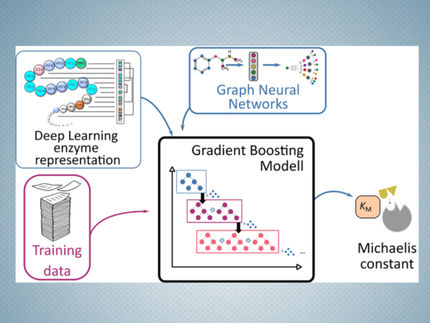USDA scientists use commercial enzyme to improve grain ethanol production
A commercial enzyme could reduce overall costs linked with producing ethanol from grain, and also reduce associated emissions of greenhouse gases, according to a study by U.S. Department of Agriculture (USDA) scientists and colleagues.
The researchers found that the enzyme helps extract water from an ethanol byproduct used to make dried distillers grains with solubles (DDGS), which can be used as feed supplements for cattle, swine and poultry. This could significantly reduce the amount of electricity, natural gas, energy and water needed for production of grain ethanol and its marketable byproducts. Results from this study were published in Industrial Biotechnology.
Agricultural Research Service (ARS) scientists David Johnston and Andrew McAloon at the agency's Eastern Regional Research Center in Wyndmoor, Pa., helped lead the study. ARS is USDA's chief intramural scientific research agency, and these findings support the USDA priority of developing new sources of bioenergy. Washington University in St. Louis (WUSTL) professor Milorad Dudukovic and graduate student Ana Beatriz Henriques in the WUSTL Department of Energy, Environmental and Chemical Engineering also were members of the research team.
"The production of grain ethanol is a key component in our nation's efforts to increase the supply of transportation fuels derived from renewable plant resources," said ARS Administrator Edward B. Knipling. "The results from this investigation give us new tools for increasing the efficiency of grain ethanol production and for protecting our natural resource base."
The study was conducted at Center Ethanol Company in Sauget, Ill., a commercial facility that produces 54 million gallons of ethanol and 172,000 tons of DDGS every year from corn. In the study, the scientists added one pound of an experimental dewatering enzyme for each 1,000 pounds of corn. The enzyme was supplied by Genencor, a major developer and manufacturer of industrial enzymes that is now part of DuPont Industrial Biosciences. After the grain had been fermented into ethanol, the researchers transferred the leftover slurry of corn solids and water, called "stillage," into a centrifuge, where much of the water was extracted.
The stillage was transferred first to an evaporator and then to a dryer powered by natural gas for another round of moisture reduction. The scientists found that the amount of natural gas needed by the dryer to reduce stillage moisture content to levels suitable for DDGS production dropped 14 percent because water extraction in the centrifuge had been boosted by the enzymes.
Data from these trials were used to calibrate an existing economic model of ethanol production. The resulting estimates indicated that using the enzymes to dewater the stillage would reduce overall facility water use by 10 percent, reduce electricity consumption by 2.4 percent and reduce natural gas consumption by 12 percent. The model indicated that these reductions would in turn reduce the emission of greenhouse gases equivalent to approximately 8,000 tons of carbon dioxide per year from a mid-sized ethanol facility producing around 50 million gallons of grain ethanol annually.
Other news from the department science

Get the life science industry in your inbox
By submitting this form you agree that LUMITOS AG will send you the newsletter(s) selected above by email. Your data will not be passed on to third parties. Your data will be stored and processed in accordance with our data protection regulations. LUMITOS may contact you by email for the purpose of advertising or market and opinion surveys. You can revoke your consent at any time without giving reasons to LUMITOS AG, Ernst-Augustin-Str. 2, 12489 Berlin, Germany or by e-mail at revoke@lumitos.com with effect for the future. In addition, each email contains a link to unsubscribe from the corresponding newsletter.




















































